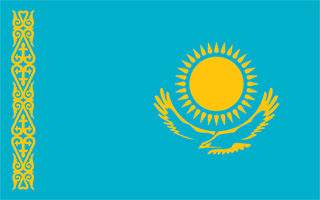Summary
Set around the lush Tamgaly Gorge, amidst the vast, arid Chu-Ili mountains, is a remarkable concentration of some 5,000 petroglyphs (rock carvings) dating from the second half of the second millennium BC to the beginning of the 20th century. Distributed among 48 complexes with associated settlements and burial grounds, they are testimonies to the husbandry, social organization and rituals of pastoral peoples. Human settlements in the site are often multilayered and show occupation through the ages. A huge number of ancient tombs are also to be found including stone enclosures with boxes and cists (middle and late Bronze Age), and mounds (kurgans) of stone and earth (early Iron Age to the present). The central canyon contains the densest concentration of engravings and what are believed to be altars, suggesting that these places were used for sacrificial offerings.
Location on Map
Show bigger map on Openstreetmap
Introduction
The Petroglyphs within the Archaeological Landscape of Tamgaly, located in the Almaty Oblast of Kazakhstan, is a UNESCO World Heritage site of immense historical and cultural significance. This site is renowned for its collection of rock carvings, or petroglyphs, which provide a unique glimpse into the ancient civilizations that once thrived in this region. With a rich history dating back thousands of years, the site is a testament to the artistic and cultural achievements of the past.
History
The petroglyphs at Tamgaly were created by various nomadic tribes and settled communities over a span of several millennia. The earliest carvings date back to the Bronze Age, around 4,000 BCE, while the most recent ones were made during the medieval period. These petroglyphs were primarily created by the tribes of the Saka and Wusun, who inhabited the region during different periods.
The carvings depict a wide range of subjects, including animals, hunting scenes, religious rituals, and daily life activities. They provide valuable insights into the cultural practices, beliefs, and artistic expressions of the ancient inhabitants of this area. The petroglyphs also serve as a record of the region's history, documenting the interactions between different civilizations and the evolution of their artistic styles.
Current State
The Petroglyphs within the Archaeological Landscape of Tamgaly have been remarkably well-preserved, thanks to the remote location of the site and the arid climate of the region. The carvings are predominantly found on large boulders and rock formations, scattered across a vast area of approximately 5,000 hectares. The site is surrounded by a picturesque landscape of rolling hills, providing a serene and tranquil atmosphere.
To protect and preserve this invaluable heritage, the Kazakh government has taken several measures. The site was inscribed as a UNESCO World Heritage site in 2004, recognizing its outstanding universal value. A buffer zone has been established around the petroglyphs to safeguard the surrounding environment and prevent any potential threats from encroachment or development.
Visitors to Tamgaly can explore the site through guided tours, which provide informative insights into the history and significance of the petroglyphs. The carvings are accessible via well-maintained trails, ensuring a safe and enjoyable experience for tourists. Interpretive panels and signage are also present, offering detailed explanations of the various petroglyphs and their cultural context.
In recent years, efforts have been made to promote sustainable tourism in the region, aiming to strike a balance between visitor access and conservation. This includes the establishment of visitor centers, the implementation of visitor management plans, and the training of local guides to enhance the visitor experience while minimizing the impact on the fragile ecosystem.
In conclusion, the Petroglyphs within the Archaeological Landscape of Tamgaly in Kazakhstan are a remarkable testament to the ancient civilizations that once thrived in this region. With its well-preserved rock carvings and stunning natural surroundings, this UNESCO World Heritage site offers a unique opportunity to delve into the rich history and cultural heritage of Kazakhstan.
